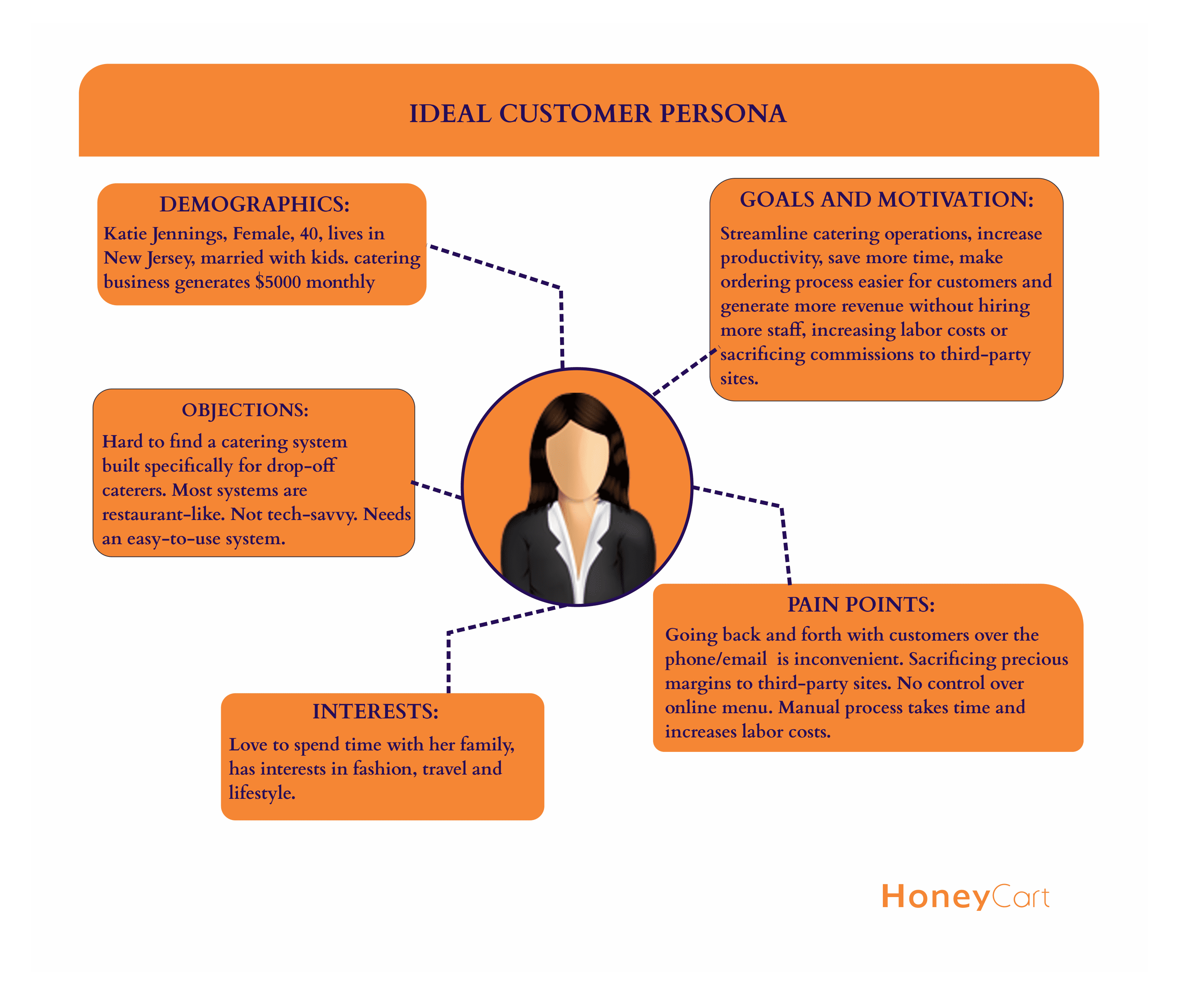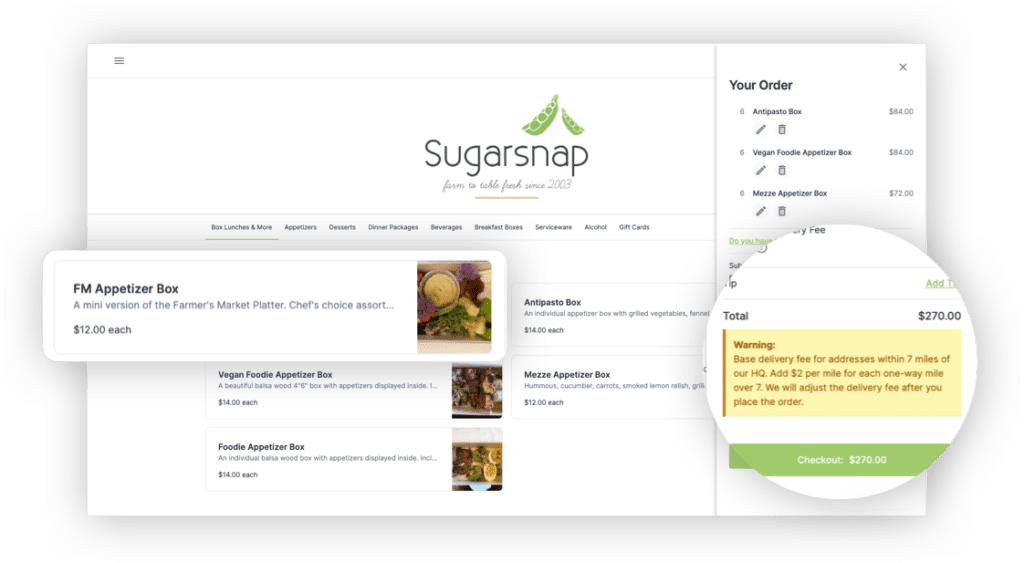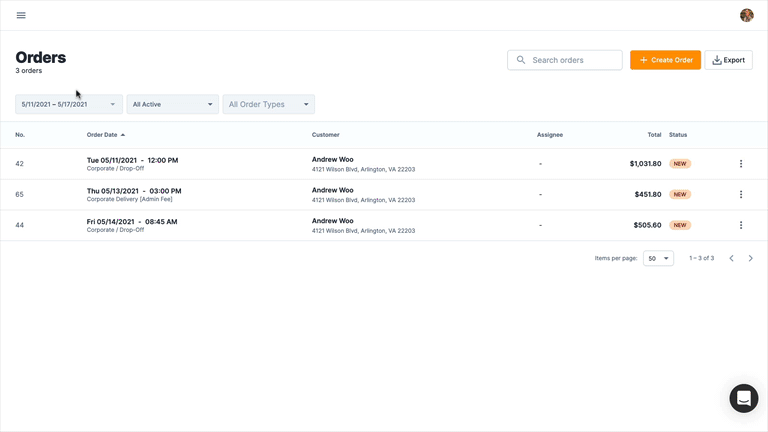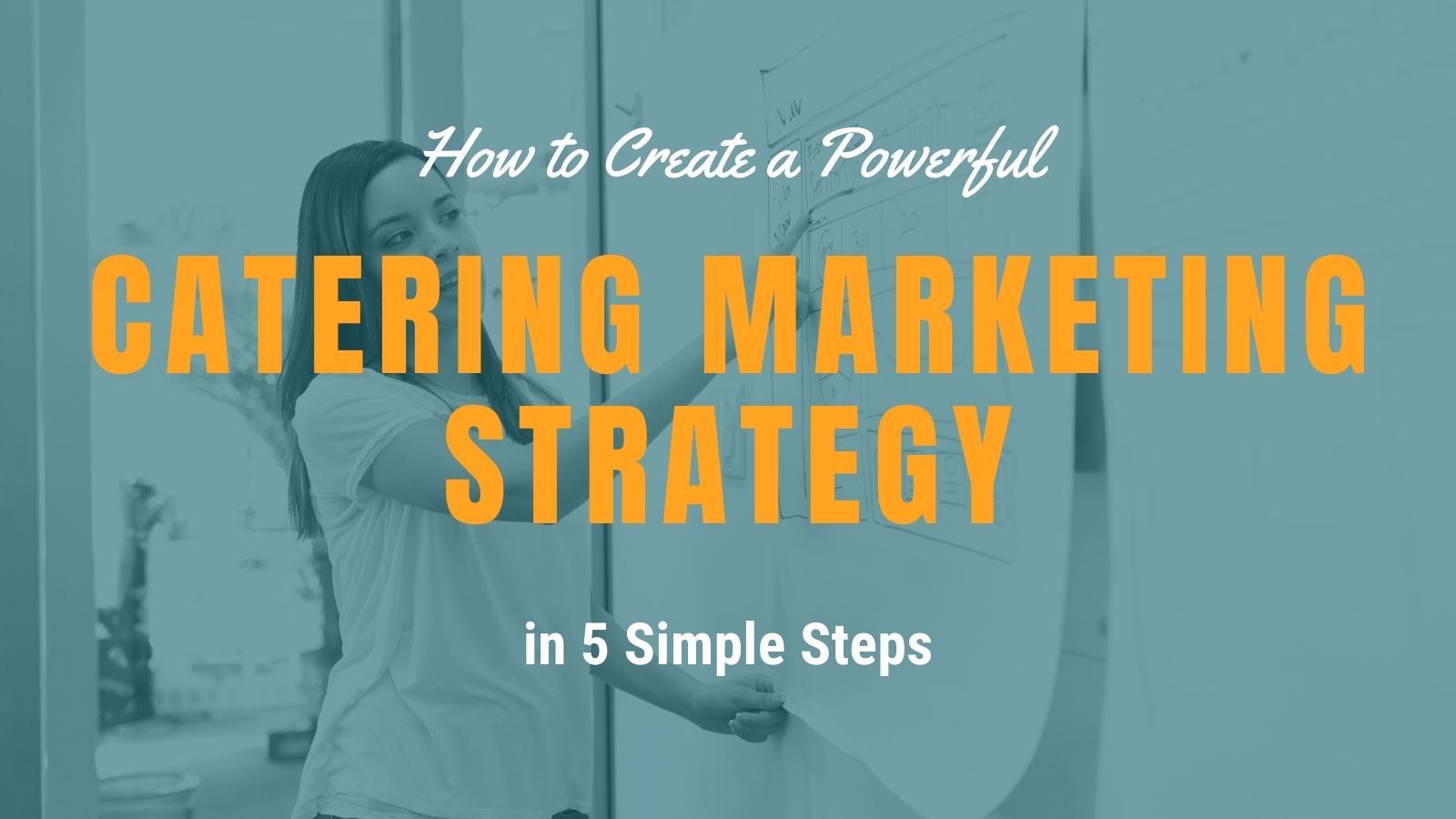Several years ago, two young women graduated from culinary school. They were very much alike. Both had the passion and talent for preparing mouthwatering dishes out of nothing.
Both were personable, had the desire to succeed, and were filled with ambitious dreams for the future.
Recently, they met at an annual caterers conference. They were still very much alike. Both were happily married, had kids, and both, it turned out had launched their catering businesses.
But there was a difference.
One was managing a small catering business in her local area with her family doing around $250k in revenue. And the other?
She was the founder and CEO of a successful catering business in her city doing around $5 million in revenue annually.
So what made the difference?
Have you ever wondered as I have how some people can start a business from scratch and grow it into a multi-million dollar empire? Whereas others struggle to even get customers and fail within the first few years?
Is it down to luck, dedication, talent, or intelligence? While all these are factors, the major difference lies in MARKETING.
While it’s true that people only buy from people they know, like, and trust, they also need to be aware your business exists.
And that’s where marketing comes in.
Marketing helps to create awareness for your business, gets them interested in your food , and influences their buying decisions.
So, if you aspire to scale your drop-off catering business to greater heights, then you need to nail your overall marketing efforts.
But to do this, you must have a solid marketing strategy. And that’s where most drop-off caterers fall short.
Marketing your catering business goes beyond posting pictures of your menu on your social media pages or relying on referrals and hoping for customers.
You need a solid marketing strategy to have a predictable source of clients. One that will not require you to break the bank.
And that’s exactly what I aim to show you in this step-by-step guide.
But before we dive in, let’s take a look at…
The Importance of a Catering Marketing Strategy in Your Business
You may have noticed big brands like KFC, McDonald’s, and the likes constantly market their products. Their ads are literally in your face.
However, they don’t just run ads because they have deep pockets.
There’s a reason behind it.
Each ad is expected to elicit a response from consumers and move them closer to purchasing their products.
And that’s the benefit of a marketing strategy.
A marketing strategy is a plan you create to help you achieve your business goals. Think of it as a blueprint or a roadmap needed to guide your marketing activities and drive your catering sales. As a result, a powerful marketing strategy will yield great results long-term.
Now imagine finding a hidden treasure without a map. You’ll keep going round and round in circles without any tangible result.
That’s exactly what marketing without an actual strategy looks like. And some of the consequences are:
- Losing potential customers to competitors
- Not generating enough demand and revenue needed to expand the business
- Missing out on growth opportunities
- Possible business closure
Now, how do you create a marketing strategy for your drop-off catering business?
5 Steps to Creating a Powerful Catering Marketing Strategy
1. Set Your Marketing Goals
If you ask most business owners what their goal is, they’ll tell you it’s to make a profit.
Well, it’s easy to say you want to make a profit but how many customers do you need to make a profit? 10? 100? Goals like this are generic and harder to achieve.
But by setting SMART goals, an acronym for Specific, Measurable, Achievable, Realistic, Timely you have a greater chance of accomplishing your goals.
Also, you’ll know exactly what you are working towards. It helps you narrow your efforts within a timeframe and increases your chance of success.
But before you set your goals, you have to figure out where your business needs to improve. You can get feedback from your staff or customers.
In addition, you can analyze sales from previous months or years to get more insight on where to upgrade.
Once you’ve done this, it’s easy to set SMART goals for your catering business.
For example:
Specific – A specific goal could be “investing in a catering software that helps you increase catering sales by at least 30% in six months” or “getting 10 new catering clients in four weeks”.
This is much better than just saying you want to increase sales or you want new customers.
Measurable – any goal you set should be measurable. This way, you can track whether you are making progress.
For example, if you say you want to get a specific number of clients in a month, you can measure it by keeping track of each client you get.
Achievable – another criterion for setting SMART goals is whether it’s achievable. This is where you ask yourself, “Do I have the time, money, or resources to achieve this goal? If not, what do I need?”
Realistic – whatever goal you set should be realistic to achieve given the resources at your disposal. For example, saying you want to get 1000 clients within three months without any marketing plan is unrealistic.
But 20 clients in a month with a solid marketing strategy? That’s more like it.
Timely – lastly, your goal must be time-bound. As such, it should have a start and end date. This is where you add deadlines to each task.
This way, you feel a sense of urgency to complete them. And of course, it’s extra motivation.
As a bonus, you can reward yourself whenever you hit your goals within a specific timeframe.
Once you’ve set your SMART goals, the next step is to…
2. Identify your Ideal Customers
Without a doubt, food is everyone’s business. So, you may be tempted to think everyone is your customer, but in reality, everyone is not.
As such, you have to know who your ideal customers are. These are the set of individuals that need and demand your catering services.
They may be corporate clients, families, moms, or event planners depending on the kind of catering services you offer.
To narrow down your ideal customers, you can create an Ideal Customer Persona (ICP) – a detailed fictional description of someone who represents your target audience.
An ICP will help you make your message more personal. This way, you’ll understand who they are, what they think, and why they buy. This will result in more targeted promotions.
Your ICP should contain information like:
- Demographics – age, gender, marital status, religion, income level, education, and employment.
- Location
- Interests/Hobbies
- Motivations
- Goals
- Challenges
- Fears
- Objections.
Here’s an example of HoneyCart’s ICP:

Once you’ve identified who your ideal customers are, then it’s easier to position your catering business to appeal directly to them.
Just as Aleya Harris, an award-winning marketer, former chef, and catering company owner mentioned in this article:
“The message you portray in your marketing material matters, and it can turn your business into a successful operation. Your plan doesn’t have to be super complicated. All you need is knowledge of who your ideal client is and how you can best solve their problem. Once you discover that, you can create a message that converts them to loyal customers who enjoy doing business with you.”
However, without knowing your ideal customers, you’ll end up wasting your time and resources targeting people who aren’t interested in your catering services.
3. Spy on Your Competitors
Before every football match, coaches and players go through the opposing team to analyze their strengths, weaknesses, opportunities, and threats. In the end, they come up with an effective plan to win the game.
Whether they win or not will be decided on the field. However, by carrying out competitive research and analysis, they’ve improved their chances of winning.
This exact thing applies in any industry. Competitive research is an important part of a solid marketing strategy. You conduct this research to know what you do better or worse than your competitors.
As a result, you can create a unique selling point that makes you stand out from your competitors.
Here’s how to do this:
First, research your direct competitors. That is caterers who offer similar services to you. You can check out their social media pages, website, Google and review sites.
Next, analyze their business to get answers to questions like:
- What types of customers do they serve?
- What’s their messaging?
- What is their pricing (premium, low, etc.)?
- What is their unique selling point?
- Which services do they offer?
- What are their weaknesses?
- What kind of platform do they use?
Once you’ve found two, three, or four catering businesses closely related to yours, find something you offer that is completely different from theirs. This gives you an edge over them.
For example, if you find out that your competitors offer free delivery services, you can also offer free delivery services but go a step further by adding a baked goodies basket as a gift to your customers.
You get the idea right?
This will go a long way in helping you retain more customers and even gain referrals.
Also, it doesn’t have to be food-related.
For example, using a catering management system like HoneyCart to manage your entire catering operations can give you an edge over your competitors as most of them don’t offer online ordering.
Also, your customers would find your ordering process easy and convenient.
For example, Abbey Duke, CEO of SugarSnap made a smart decision to invest in HoneyCart after realizing her competitors offered a better way for their customers to order.
According to Abbey:
When I first heard of HoneyCart, I was concerned it would be another restaurant system that couldn’t meet the needs of caterers. But I knew if we didn’t offer online ordering, we’d be losing sales to companies like Panera that make it easy to order. Busy customers expect convenience and will often choose it over quality.

Making a bold decision like this is a result of conducting competitor research.
4. Plan & Execute
So you’ve done a great job of setting your SMART goals, identifying your ideal customers, and spying on your competitors.
The next step is planning how you’ll market your catering business and more importantly, executing your plan.
This is where you establish your marketing budget, determine online and offline channels you’ll use to promote your services, your campaign theme, prepare your special offers, and so on.
Once you have a plan on the ground, then it’s time to set your plan in motion.
And like most things, a well-planned, well-executed marketing strategy can lead to a massive boom in your business.
5. Analyse & Measure Results
This is another effective yet often overlooked step in a powerful marketing strategy.
Though it happens after a marketing campaign, it’s equally important to analyze your results to measure the success of your catering marketing plan.
Remember those goals you set earlier? This is the time to check if you’ve met and surpassed them.
You can also check what’s working and what’s not so you’ll know where to improve your efforts.
However, you don’t necessarily have to wait till the end of your deadline before measuring results. You can set mini-deadlines to help you determine if you should double your efforts.
For example, if your goal was to get 30 new clients in three months, you can check every month to know how many clients you’ve gotten.
Without a doubt, analyzing your results will help you make informed decisions when planning your next marketing strategy.
And what’s the most critical form of measurement for a marketing strategy?
Sales.
And HC makes it possible. You can see in real-time how many orders you booked within the specific timeframe you set in your SMART goals.

Conclusion: Achieve Your Marketing Goals with HoneyCart
There you have it!
Five powerful steps to creating a catering marketing strategy. It may look like a daunting task at first, but trust me, it isn’t.
You simply have to set SMART goals, know who your ideal customers are, check out your competitors to discover ways you can improve, create and execute your plan and lastly, measure your results.
And one way to ensure you get results is by using catering software like HoneyCart to manage your entire catering operations.
After all, the whole point of marketing is to create awareness and get customers. But if they are ready to do business, do you think going back and forth with you over the phone or email will win them over?
Of course not.
However, once they go through an easy and convenient process of visiting your online menu and placing their orders in a couple of minutes, you have secured them as loyal customers.
Just as Carol Madaio, the Office Manager of DSquared Hospitality Company, a member of the Leading Caterers of America realized when she switched to HoneyCart.
According to Carol:
“Before Honey Cart, we did it all over the phone. We do love to talk to our clients but we realized that most people really like to pick what they want and pay and be done. Our team saves a lot of time and our clients are happier.”
So, if you are ready to hit and surpass your marketing goals and at the same time, keep your customers happy, then start a 14-day free trial to discover how HoneyCart can help you achieve all these.
Oh! About those two women, I mentioned at the start of this article. What made the difference in their lives?
Well, one had a powerful marketing strategy.


Nice job